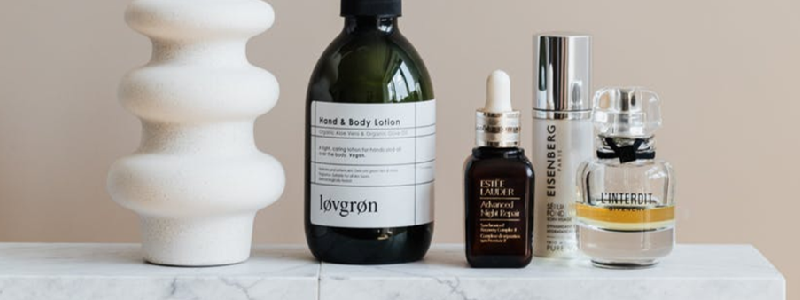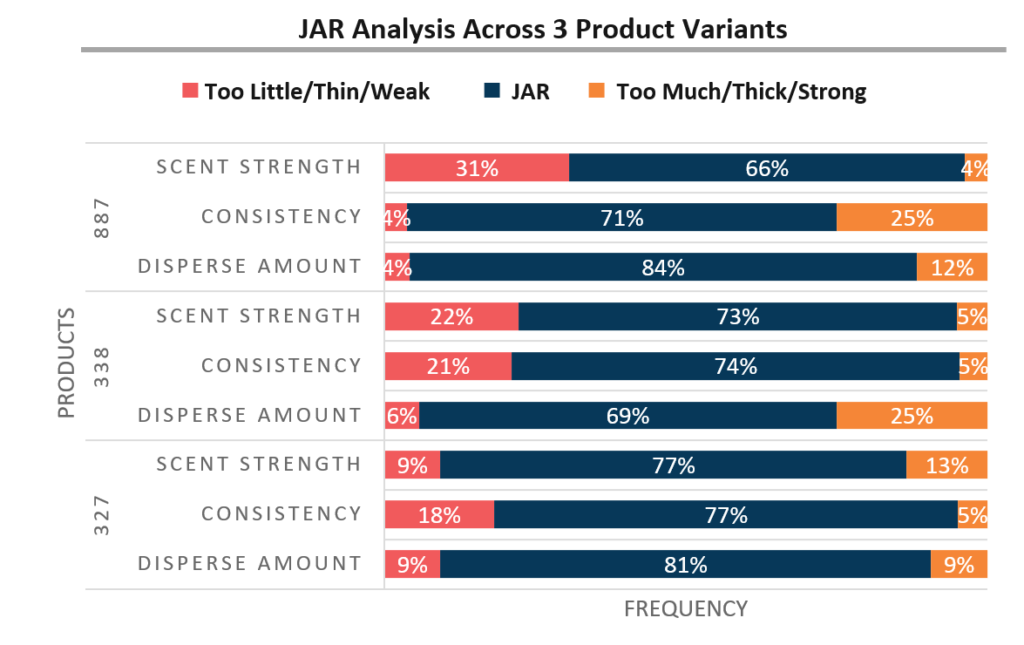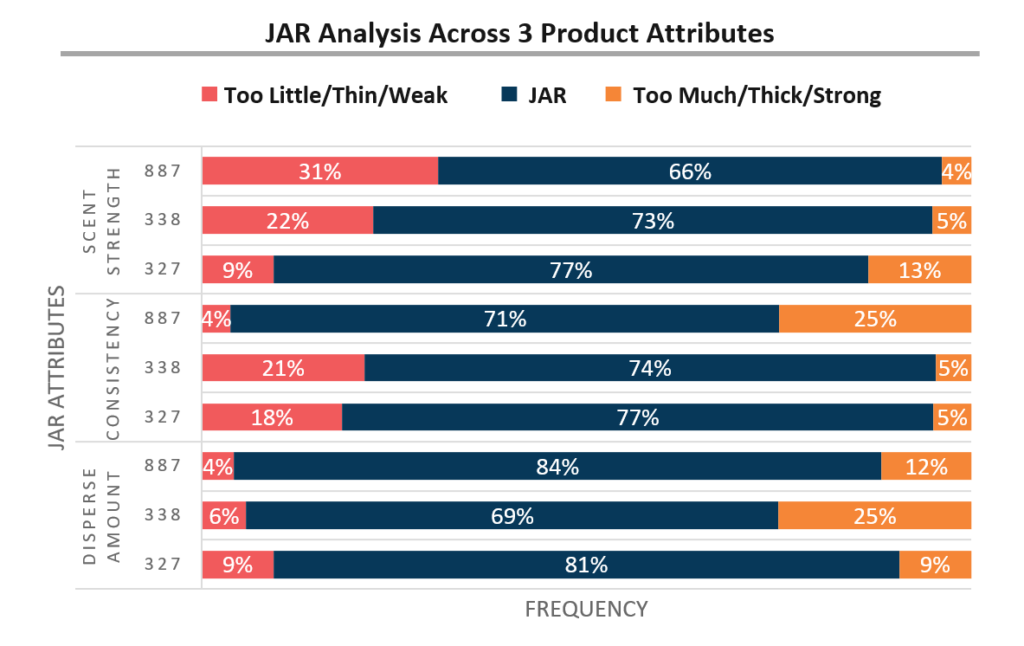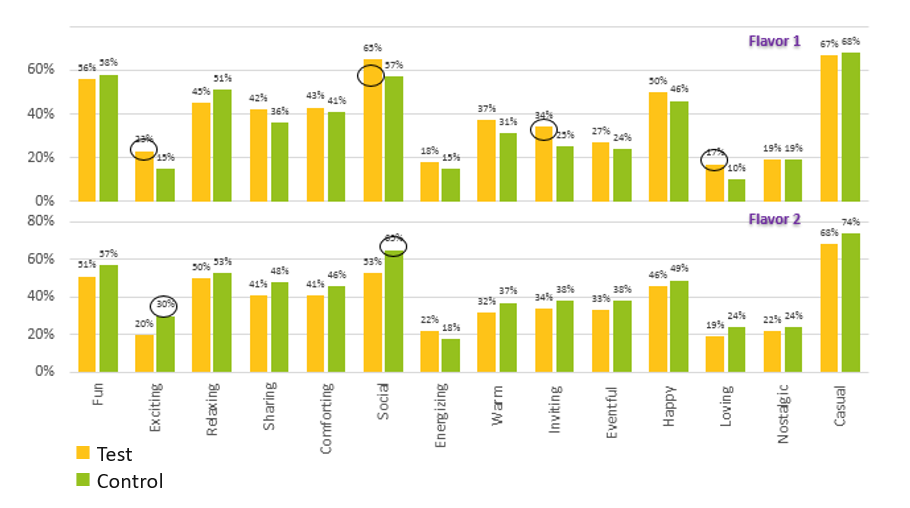
By E2E Research | June 2, 2021
Research Objective
- A personal care client developing a new product needed to understand the ‘must have’ attributes of their product.
- Specifically, they needed to know whether to dial up or down the scent, consistency, and dispersal amount to achieve the optimum level of each attribute.
Scope & Methodology
- After testing three product variants, participants rated the intensity of several attributes – how did it compare to being “Just About Right”
- 5 point scale ratings were converted to 3 point scales and mean likeability scores were calculated for each attribute followed by mean drop scores for the off-limit groups.


Value Delivered
- The product development team was able to understand which product features of the three variants were more and less desirable, and were able to adjust the thickness and scent strength appropriately to improve likability of the product.

